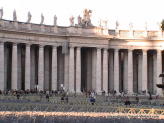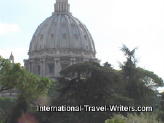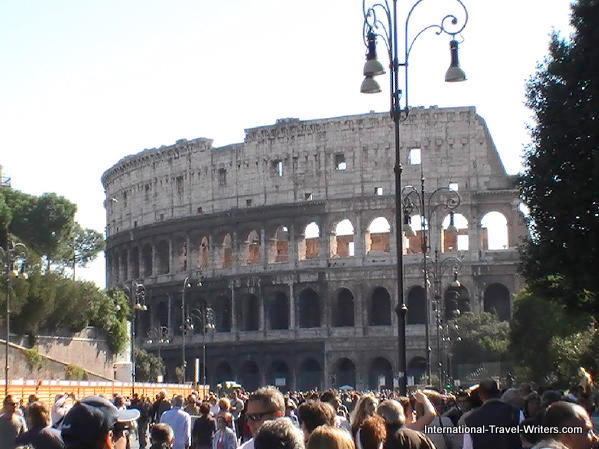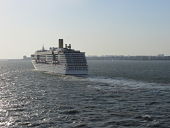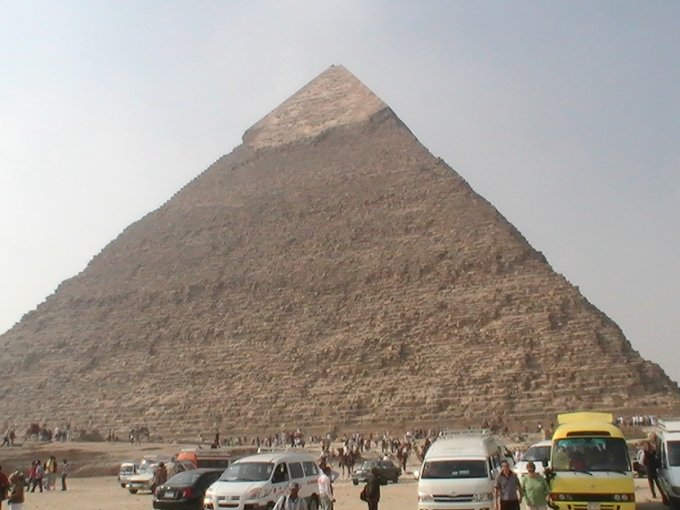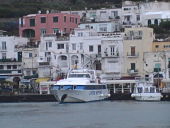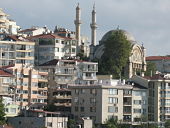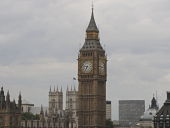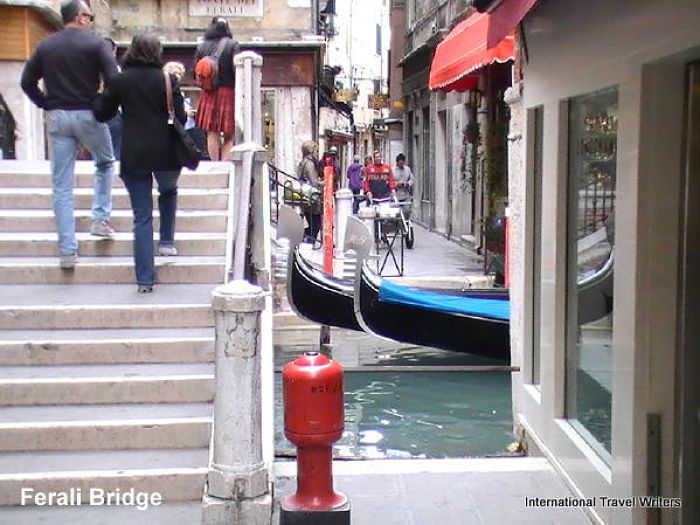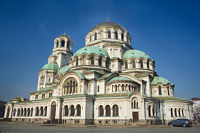Vatican Museums

Entry to the Vatican Museums is through the north wall of Vatican City and stretches a very lengthy path south to St. Peter’s Basilica. In between are long, narrow galleries designed by Bramante that have gorgeous painted walls and ceilings.
However, once inside there are stairs and escalators up the new entrance hall with a bunch of ticket desks. You can avoid these lines by booking a guided tour or buying tickets in advance.
We opted to have a guided tour by "Eyes of Rome" and our guide was Mike Botula... we highly recommend this guide and the company. Mike's knowledge was amazing and was delivered in a conversational way so that you didn't feel bombarded with information.
The north end contains the Pius-Clementine Museum, Egyptian Museum, Etruscan Museum and Vatican Picture Gallery. The south end houses the Raphael Rooms, Borgia Apartments and the Sistine Chapel.

The Pius-Clementine Museum houses Greco-Roman sculpture and occupies two floors of the Belvedere Pavilion at the northwest end of the Vatican Palace. It was founded in the 18th century by Clement XIV and the collection grew under the direction of his successor, Pius VI.
This unit of the Vatican Museums displays vast collections of the Renaissance popes as well as 18th and 19th century acquisitions. Most are primarily Greek and Roman originals but do include some 1st and 2nd century Roman copies of Greek originals.
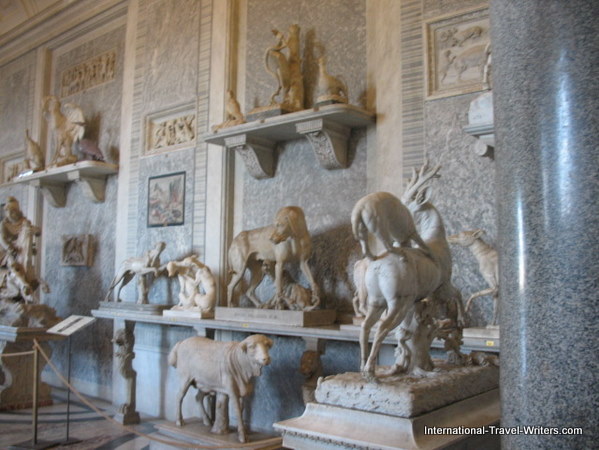
The Sala Degli Animali is a room that is aptly named because it consists mainly of ancient animals. There are approx. 150 various animals in different poses.

In this area of the Sala Degli Animali Room, at the rear you will see the famous statue named Meleager.

The Sala Delle Muse room houses the statue group of Apollo and the nine muses as well as statues by well known ancient Greek sculptors. Apollo with a cithara is a Roman copy of Apollo of Scopas. This was found with 7 Muses near Tivoli in the ruins of the villa of Claudius. In this grouping Apollo is with Caliope, the Muse of elegy and Terpsichore, the Muse of Dance.

Other Muse Statues found at the ruins of the villa of Claudius include Clio, Muse of History...Urania, Muse of Astronomy...Thalia, Muse of comedy. Sorry for the blurry photo.

Interspersed with busts of ancients is Melpomene, Muse of Tragedy.
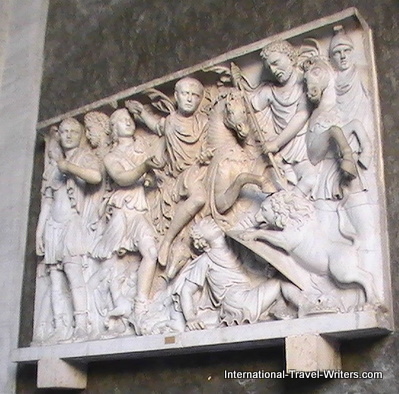
In the Chiaramonti Museum there is a collection of Roman busts and statues. Many line the
walls and halls. It was founded by Pius VII whose family name was
Chiarmonti (1800-1823). Amongst the thousand or so statues etc. are
friezes and reliefs of sarchohagi and even portraits of Emperors and
gods.
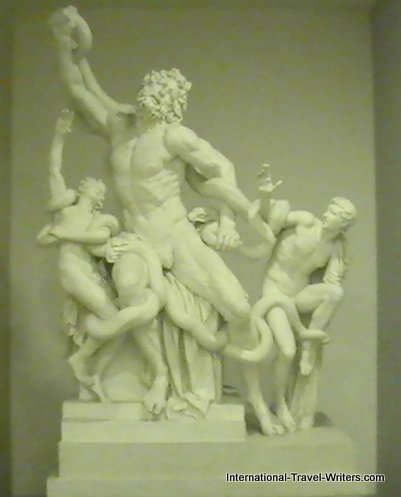
The Trojan priest Laocoon and sons Antiphantes and Thymbraeus being strangled by sea serpents is from a story in Virgil’s Aeneid. Laocoon was a Trojan priest of Apollo who warned that there was a trick involved with the Greek’s wooden horse and was adamant that it shouldn’t be allowed into Troy. This angered Apollo, who sent serpents to kill him and his sons.
This wonderful example of Hellenistic art was discovered on the Esquiline Hill in 1506 and bought by Pope Julius II. The statue was discovered with missing parts. Laocoon’s right arm was missing as were the hand of one child and the right arm of the other child.
Artists tried to figure out and interpret what postures were involved in the original sculpture so they could repair it. Michelangelo, with his detailed knowledge of the anatomy, suggested that the missing right arms were originally bent back over the shoulder. His opinion was considered controversial because others believed it was more appropriate to show the right arms extended outwards in a more deliberate and heroic gesture.
The Pope held an informal contest among sculptors to make replacement right arms. It was judged by Raphael. The winner had the arms in a stretched out position……those were attached to the statue.
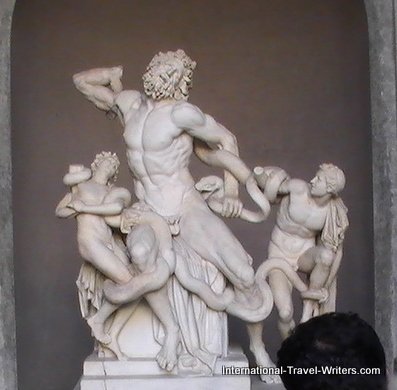
However, in 1906 Ludwig Pollak, an archaelologist and director of the Museo Barracco discovered the missing arm in an antique shop in Rome. He recognized the similarity to the Laocoon sculpture so he gave it to the Vatican Museums. Strangely, it remained in their storerooms for half a century.
In the 1950’s the museum finally decided that this indeed was the missing part of the Laocoon and they dismantled and reassembled it with its original arm. It was interesting that arm was bent as Michelangelo had suggested it would be.
The job was a complex combination of methods
because the children’s arm and hand also had to be reworked. The
original sculpture is in the vatican Museums as well as a copy of the
statue but with the outstretched arm.
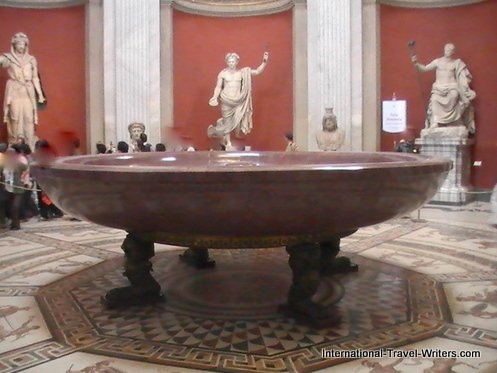
Sala Rotonda is like a miniature version of the Pantheon. This circular Hall was built under
Pope Pius VI and the cupola imitates that of the Pantheon. It is
decorated with stucco work and supported by 8 columns. It has intricate
ancient mosaics on the floors and the great mosaic in the floor in the
center of the room was discovered at Otricoli in 1780. Nero’s large
porphyry marble bath is staged in the center and a selection of ancient
statues lining the walls includes the bronze Hercules.
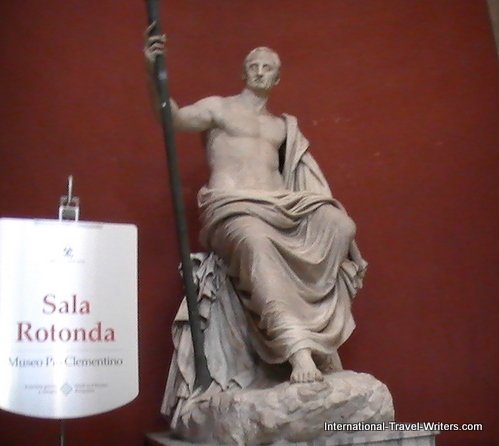
The statue of Galba, an emperor of Rome that lasted only briefly after Nero's death.
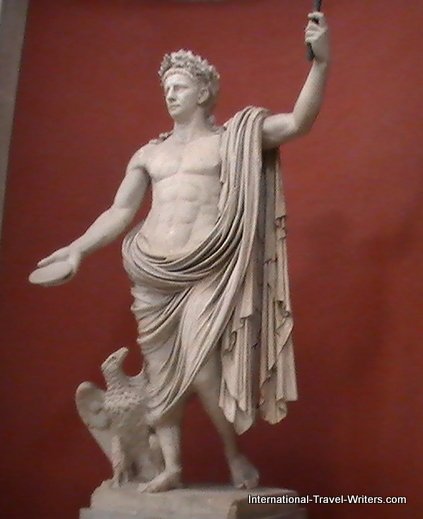
This pose of Claudius, dressed as Jupiter, is in the Sala Rotonda
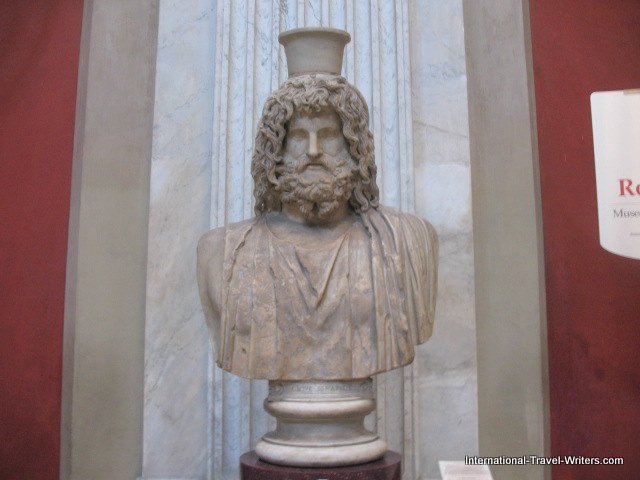
Included in the collection of Sala Rotonda is the bust of Zeus of Otricoli, one of the prized possessions of the Vatican Museums.
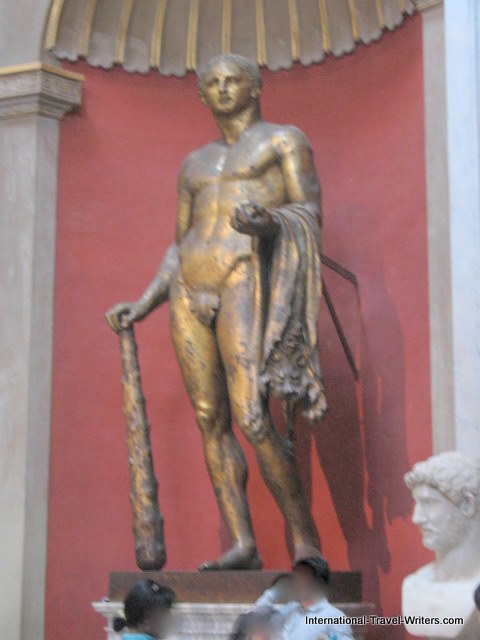
Hercules of the Theatre of Pompei is located in the Sala Rotonda (Hall of the Biga) in the Vatican Museums. The gilded bronze sculpture dating back to the early 2nd century, was discovered in 1867 near the Theatre of Pompei. It had been struck by lightning and it appeared to have been carefully buried under tiles to protect it from further damage. He has a lion skin draped over his left arm and has a club he is slightly supported by.
Our guide had us look at the sculpture from two different angles to see the split from the lightning and where it had been repaired. The head, when viewed from the side showing the right side of his face is definitely a little off. For the most part when viewed from the front or other side it isn’t noticed. Pope Pius IX made the purchase for the Vatican Museums.
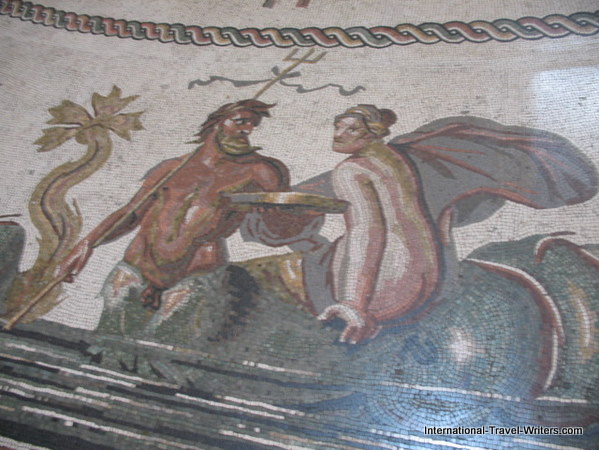
This is a section of the outer circle of the Mosiac Floor that was brought from the Baths of Otricoli in Umbria (1780)and it is located beneath the centerpiece of Nero's bath that rests atop of it.
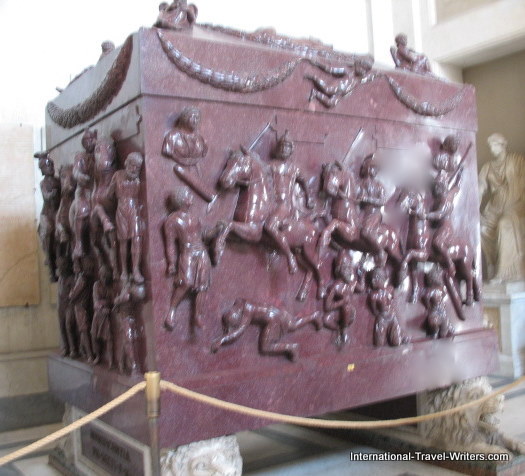
Hall of the Greek Cross houses two intricate porphyry sarcophagi from the Early Christian era. St. Helena, mother of Constantine (shown above) and Canstantia, daughter of Constantine.

This exquisite mosaic floor draws a lot of attention because of the intricate detail It is a major art work of the Vatican Museums.

The Belvedere Torso joined the Vatican Museums collection sometime between 1530 and 1536. It is believed to be a representation of the warrior Ajax when he contemplates suicide. According to the myth, Ajax was driven mad when Ulysses took Achilles’s weapons from him. Convinced that he was face to face with the enemy he massacred the animals held in the Greek camp. Once he regained his senses he killed himself in shame.
There were writings by ancient authors saying that a monument had been placed on the plains of Troy to commemorate him. However, numerous copies were made in Roman times and the Vatican’s example can be traced to a series of replicas made in the 1st century BC by an Athenian sculptor. His signature, in Greek letters, is found on the base of the rock
Having trouble finding what you need? International Travel Writers Index and Map
OR
Do you have a travel experience or story to share? Share your travels here!
Related Articles......
Return from Vatican Museums to International Travel Writers Homepage
By Carolynne Woods, © Copyright 2010-2020. International Travel Writers.com All rights reserved images and text
